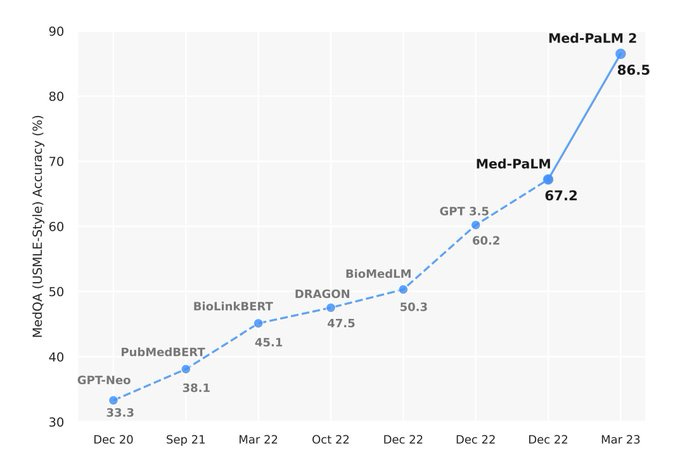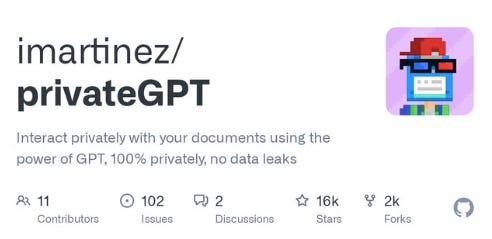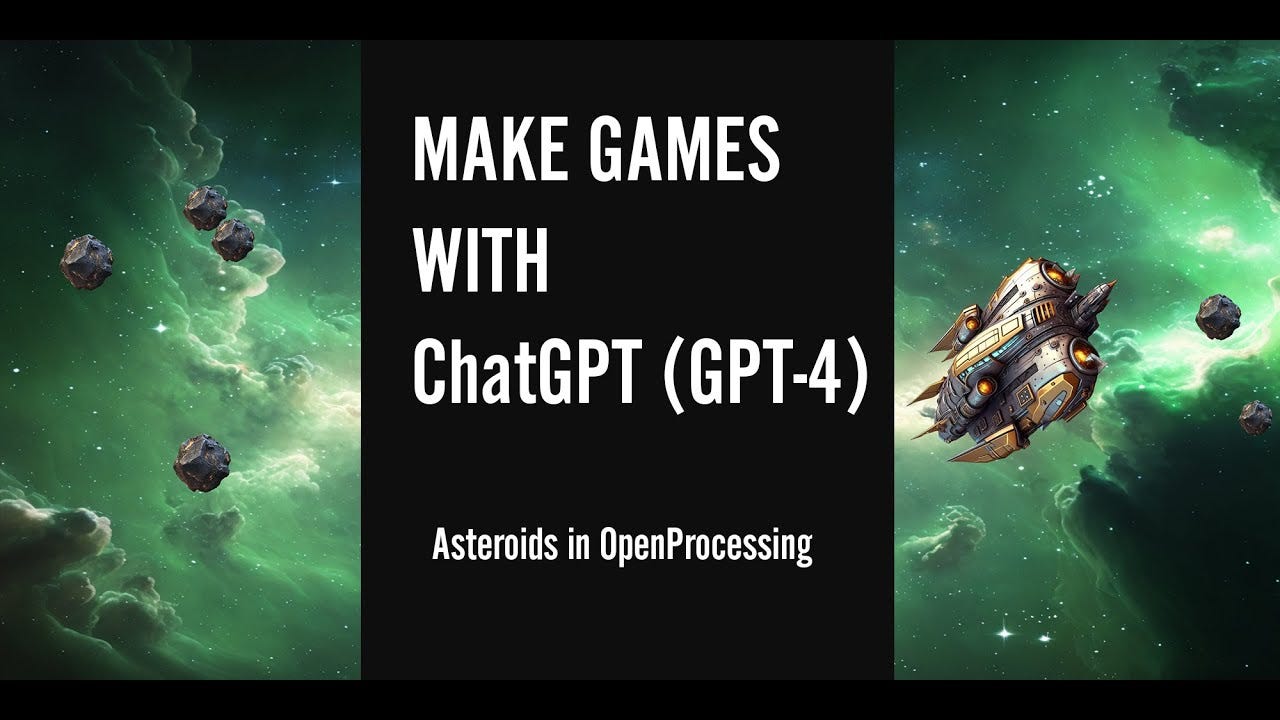🩺 Can AI Be Trusted to Make Medical Decisions?
Regulation of GenAI, Game Character Design, Med-PaLM 2, Adaptive AI Music Systems + more
Greetings everyone,
👋 Deiniol here.
Did you know researchers tried teaching an AI model to play the original Sonic the Hedgehog and prioritise increasing its score, but it began glitching through walls in the game’s water zones in order to finish more quickly? Ie. Cheated? And this was in 2018…
Here is your weekly dose of AI broken down into 3 highlights, 2 tools and 1 demo/tutorial.
Please feel free to share with your closest. Hope you enjoy 🦘
Ps. Are you in the U.S and want the actual ChatGPT iOS app? Here you go.

"I have no equity in OpenAI. I'm doing this because I love it."
- Sam Altman when asked by Mr Kennedy if he “makes a lot of money”.
1 - Sam, Gary and Christina before the Senate
Defining the Future: Oversight and Regulation of Generative AI
AI regulation is a walk in the park. Said no one ever.
Under the command of Senator Richard Blumenthal, on May 16, 2023, thinkers, innovators and leaders alike came together to debate the frontiers of tech, law, privacy and society in a hearing entitled, ‘Oversight of A.I.: Rules for Artificial Intelligence’.
♟The key players:
Sam Altman - needs no introduction
Gary Marcus - NYU Professor and outspoken critic of the current AI hype
Christina Montgomery - IBM CPO & AI Ethics, Data Privacy & Cybersecurity at IBM Data
The big-ticket item on the agenda: Generative AI.
Here's the rub, though. It's clear that generative AI carries the promise of societal perks, like jazzing up education, entertainment, health care, journalism, art and countless other fields but this undoubted revolution isn't without its pitfalls, ranging from privacy concerns, amplified bias and discrimination to complete existentialism (of which there was surprisingly little mention of from anyone from the Senate).
Sam - “We’ve spent most of the time today on current risks and I think that’s appropriate. As these systems do become more capable, I’m not sure how far away that is but maybe not super far away, I think it’s important we spend time talking about confronting those challenges.”
Senator Blumenthal - “Let me talk to you privately.”
Gary Marcus - “Let me just add for the record that I am sitting next to Sam and his sincerity in talking about those fears is very apparent physically in a way that just doesn’t communicate on television.”
So, what's to be done? The bipartisan consensus was that generative AI needs a leash – some form of regulation and a possible federal and/or global governance agency – to keep it ethical, responsible and beneficial.
But regulation is like herding cats, thanks to the diverse and fast-paced evolution of AI technologies.
🧩 The potential solutions
Democrats have proposed legislation in both the House and Senate to address AI: One bill would create a new agency to manage U.S policies on AI, while another would require political campaigns to disclose the use of AI in their advertising.
Besides that, the vague proposed solutions to pursuing a global approach to AI governance were:
Clear Definitions & Standards for generative AI
Transparency and accountability from AI creators and users
Boosting public understanding of AI's capabilities and drawbacks
Encouraging conversations among government, industry, academia and civil society
Change is coming and society must navigate the promises and pitfalls of generative AI and its regulation.
2 - Unreal Engine 5.2 is now available!
ML Deformer: A New Dawn for Game Character Design with AI
Character design in gaming isn't a low-stakes game. Designers slave over complex software to bring creations to life, layering on intricate details like muscle definition, lifelike flesh and believable cloth simulations. Now, this painstaking process is in the crosshairs of Unreal Engine's latest brainchild - the Machine Learning Deformer on Unreal Engine 5.2.
Using the wisdom of machine learning, designers can now generate high-fidelity mesh deformations for skinned characters that look and move like they've stepped out of reality. It's like a skilled tailor, masterfully crafting each wrinkle and fold of a character's physique and outfit with jaw-dropping accuracy and efficiency.
🔗 Key links
3 - Med-PaLM2 - The evolution
Towards Expert-Level Medical Question Answering with Large Language Models
Doctors spend years pouring over complex studies, accumulating vast stores of knowledge and sharpening their decision-making skills to outsmart intricate health challenges. Well, it seems this medical mastery is now in the sights of AI, specifically, Large Language Models (LLMs).
Enter stage right: Med-PaLM 2. A beast of a model that combines the genius of LLM improvements (in the form of PaLM 2), medical domain fine-tuning and a dash of novel ensemble refinement tactics.
Med-PaLM 2 clocked an impressive score of up to 86.5% on the MedQA dataset, setting a new record and exceeding the performance of its predecessor by over 19%. It also turned heads with its stellar performance across the MedMCQA, PubMedQA, and MMLU clinical topics datasets.
In a head-to-head evaluation of long-form questions, physicians actually preferred the answers churned out by Med-PaLM 2 over their own on eight of nine clinical utility factors. Even when faced with a series of challenging "adversarial" questions designed to probe its limits, Med-PaLM 2 showed significant improvements compared to the original model.
Of course, we're not quite ready to hang up the white coat and stethoscope. Further studies are needed to confirm if these models can cut the mustard in real-world medical settings. But it's clear that we're seeing rapid progress towards AI that can give physicians a run for their money when it comes to answering medical questions.
⚙️ Tool 1
PrivateGPT | One for the technical folks (currently)One for the devs:
Want AI to scour through documents, pick out vital information and answer your questions — all without needing to access the internet? Meet PrivateGPT.
A tool designed to harness the capabilities of GPT and offer an entirely private interaction with your documents.
The concoction of PrivateGPT involves a heady mix of technologies — LangChain, GPT4All, LlamaCpp, Chroma and SentenceTransformers, each playing a critical role in delivering this private AI power.
The absence of internet reliance means all the data processing takes place locally, mitigating the risk of data leaks and ensuring your documents remain solely under your control. This level of privacy can prove invaluable when handling sensitive or confidential material.
👩💻 So, who can benefit from this AI-in-a-bubble?
Researchers or students: PrivateGPT can serve as an efficient information extractor, answering queries directly from a repository of documents.
Professionals working with sensitive materials can interact with documents without compromising data security.
Those in regions with unreliable internet.
Developers and data scientists: Build or test applications with language models, while keeping the data local and private.
⚙️ Tool 2
Warpsound | Adaptive AI Music SystemsContinuing with last week’s Music Model theme, WarpSound is a serious contender for rewriting the rules of music experiences.
Created in partnership with Grammy-winning artists and using a unique training dataset, WarpSound crafts original music in real time. This prowess is used to power interactive music experiences for streaming platforms, gaming and beyond. Its unique musical intelligence will soon be accessible through a flexible API.
It's also a platform for immersive musical experiences. WarpSound's performances, experienced by organisations such as Mastercard, YouTube Live, Tribeca Festival, and The Sandbox, showcase the potential of generative music experiences. These events serve as a glimpse into the future of musical creativity, potentially providing new avenues for live events and digital performances.
Incredibly, it also features virtual artists. These AI performers act as the frontiers of generative music, bringing it alive in unexpected ways. Their ability to collaborate, experiment and play can unlock novel perspectives in music creation and performance.
Finally, it's a source of digital collectibles. WarpSound has the ability to churn out digital collectibles on a large scale. Musicians and Web3, meet AI.
This is a thrilling proposition for audiences intrigued by the fusion of technology and art. We could see the next Gorillaz any day now.
🧑🏫 Demo/Tutorial
Make Games with ChatGPT (GPT-4) | Kris KashtanovaKris from kris.art uses GPT-4 to develop an asteroid game using OpenProcessing and showcases her process in her latest video tutorial. She incorporates the use of AI-generated textures, making the entire game creation more intriguing.
Kris walks viewers through the steps of prepping and resizing assets, deploying GPT-4 to produce the JavaScript code for the game and then refining the code until the game functioned as expected. The end result is a completely operational game with an AI-created codebase and assets.
Kris admits the procedure can be a tad tiresome, especially when the AI fails to comprehend the needs fully. However, she underscores that it's also an incredible learning opportunity and paves the way for future possibilities in game development.
She even lists the prompts on her website.
Check the full tutorial here.
The future of game development with AI looks promising indeed.
If you found value in this week’s newsletter, please support us by sharing with your closest and liking our publication at the bottom. It helps a lot 🤗
Until next week, earthlings, bots and cyborgs, code out!
Deiniol 🇦🇺
Something exclusively for you guys:
Join the AI-integrated search engine, Neeva today for one month of their premium plan, totally free.
🏆 We got codesnippets.ai 28 new subscribers in just a few hours:
Get your business, podcast or AI Art in front of thousands of email subscribers, Twitter followers and AI enthusiasts, startup founders, aspiring entrepreneurs and artificial intelligence students who visit our website frequently.








